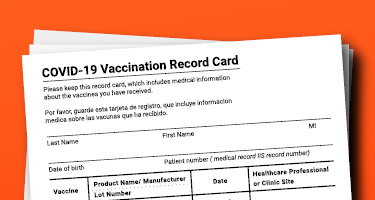Delaware amended its corporation law provision authorizing emergency bylaws and powers to provide additional clarity and authority to directors during times of emergency.
Since the start of the COVID-19 pandemic in March 2020, 26 companies in the S&P 500 either first adopted or amended existing emergency bylaws. As of August 2021, approximately one-fifth of U.S.-incorporated companies in the S&P 500 had some form of emergency bylaws.
This article (i) reviews the 2020 amendments to the Delaware General Corporation Law (the “DGCL”) as it relates to emergency bylaws, (ii) surveys emergency bylaw provisions of Delaware corporations in the S&P 500 and (iii) provides additional considerations as boards of directors continue to address corporate governance issues encountered during the COVID-19 pandemic.
Amendments to the Emergency Bylaw Provisions of Section 110 of the Delaware General Corporation Law
Section 110 of the DGCL (“Section 110”), amended in July 2020, effective retroactively as of January 1, 2020, provides that the board of directors of a corporation may adopt emergency bylaws that
shall be operative during any emergency resulting from an attack on the United States or on a locality in which the corporation conducts its business or customarily holds meetings of its board of directors or its stockholders, or during any nuclear or atomic disaster, or during the existence of any catastrophe, including, but not limited to, an epidemic or pandemic, and a declaration of a national emergency by the United States government, or other similar emergency condition, irrespective of whether a quorum of the board of directors or a standing committee thereof can readily be convened for action. The emergency bylaws contemplated by this section may be adopted by the board of directors or, if a quorum cannot be readily convened for a meeting, by a majority of the directors present.[1]
Prior to the 2020 amendments, Section 110 limited application of emergency bylaws to emergency conditions as a result of which a quorum of the board of directors could not readily be convened for action. The 2020 amendments removed that limitation, allowing for emergency bylaws to apply in emergency conditions irrespective of whether such a quorum can readily be convened.[2] As a result of the 2020 amendments, if a quorum cannot be readily convened for a meeting of the board of directors, emergency bylaws may be adopted by a majority of the directors present.[3] The 2020 amendments also clarified that an epidemic or pandemic and the declaration of a national emergency by the United States government are among the events that constitute an emergency for purposes of Section 110.[4]
Emergency bylaws authorized by Section 110 “may make any provision that may be practical and necessary for the circumstances of the emergency,” including provisions that “(i) a meeting of the board of directors or a committee thereof may be called by any officer or director in such manner and under such conditions as prescribed in the emergency bylaws; (ii) the director or directors in attendance at the meeting, or any greater number fixed by the emergency bylaws, shall constitute a quorum; and (iii) officers or other persons designated on a list approved by the board of directors prior to the emergency shall, to the extent required to provide a quorum at any meeting of the board of directors, be deemed directors for such meeting.”[5] This provision of Section 110 was not changed by the 2020 amendments.[6]
Section 110 provides that “no officer, director or employee acting in accordance with any emergency bylaws shall be liable except for wilful misconduct.”[7] Section 110 is not exclusive of any other provisions for emergency powers consistent with other sections of the DGCL that have been or may be adopted by a Delaware corporation.[8] These provisions of Section 110 were not changed in the 2020 amendments. The 2020 amendments also made changes to Section 110 not related to emergency bylaws. Those changes, which included authorization for the board of directors to address the administration of annual meetings and payment of declared dividends during emergency conditions, are beyond the scope of this article.
Emergency Bylaws of Delaware Corporations in the S&P 500
We identified 58 Delaware corporations in the S&P 500 that included an emergency bylaw provision in their bylaws as of August 2021. Twenty-six of these companies either first adopted their emergency bylaws or amended previously existing emergency bylaws since the start of the COVID-19 pandemic. This sample of emergency bylaws exhibited a range of approaches to a number of features:
- What Constitutes an Emergency? Nearly all of the emergency bylaws in our sample define what constitutes an emergency with reference to Section 110 or using wording that tracks Section 110 (either as amended in 2020 or as in effect prior to the 2020 amendments)—most commonly, “an emergency, disaster or catastrophe, as referred to in Section 110, or other similar emergency condition.” Approximately half of the emergency bylaws in our sample limit an emergency to those conditions as a result of which a quorum of the board of directors cannot readily be convened, an approach consistent with the limitation in Section 110 prior to the 2020 amendments, but more restrictive than permitted by the current Section 110. A small minority of the emergency bylaws in our sample refer to additional examples of emergency conditions, such as terrorist activity or acts of God.
- Who Decides an Emergency Has Occurred? Most of the emergency bylaws in our sample provide that they are operative during an emergency, without specifying any process for determining when an emergency has arisen or has terminated. A small minority provide that the board makes this determination, while one provides that the board of directors may designate specific directors and/or officers who are authorized to determine the existence of an emergency. In several cases in our sample, the emergency bylaws provide that they continue to apply until such time when it is feasible for at least a majority of the directors of the company immediately prior to the emergency to resume management of the business of the company.
- How and by Whom Can a Board Meeting be Called During an Emergency? Consistent with Section 110, nearly all of the emergency bylaws in our sample provide that during an emergency any one director may call a board meeting. Many grant authority to call a board meeting to officers of the corporation—either officers generally or a subset of the officers (such as “senior executive officers,” “officers reporting directly to the chief executive officer” or a specific list of officer titles). A majority of the bylaws in our sample address the manner of providing notice of a board meeting during an emergency—with most providing that notice need only be given to directors whom it is feasible to reach at the time and that notice may be given by any means practicable in the circumstances (consistent with Section 110).
- What Constitutes a Quorum at a Board Meeting During an Emergency? Nearly all of the emergency bylaws in our sample specify a modified quorum requirement for board meetings during an emergency—with most providing that the director or directors in attendance at the meeting constitute a quorum. A minority of emergency bylaws in our sample provide for a quorum consisting of a specified number of directors greater than one. In one case, there is an additional requirement that a quorum include at least one independent director. Consistent with Section 110, in most of the cases requiring the presence of more than one director to establish a quorum, the director or directors present can designate officers or other persons present to be deemed directors, and in some cases the bylaw itself provides greater specificity as to the persons who can be so designated (such as by a pre-determined list, by title or by seniority). Many of the emergency bylaws in our sample also provide that, if no directors are present, certain designated officers will be deemed directors for purposes of a board meeting.
- Limitation of Liability. Consistent with Section 110, many of the emergency bylaws in our sample provide that no officer, director or employee acting in accordance with the emergency bylaw shall be liable except for willful misconduct (in two instances, there was an added requirement that actions be taken in “good faith”). Several of these emergency bylaws further provide that any amendment or repeal to the limitation of liability provision will not apply to prior actions.
Additional Considerations for Boards of Directors
Having emergency bylaws in place—or “on the shelf”—can help establish orderly corporate governance processes during emergency conditions, and make available the Section 110 liability protection at or promptly following the outset of an emergency.
Our survey of emergency bylaws of Delaware corporations in the S&P 500 found that most such emergency bylaws generally mirror or make reference to the rights and authorizations provided by Section 110. Importantly, the survey also found that corporations have customized their emergency bylaws to reflect their institutional preferences.
Companies contemplating the adoption or amendment of emergency bylaws may wish to consider addressing a number of possible features. For example, rather than automatic operation (the default rule under Section 110), should the board of directors have express authority to determine the effectiveness of the emergency bylaws? This may be of even more relevance for boards with directors located across multiple jurisdictions. Are there specific officers, employees or other persons (including outside advisors) that should be considered first for deemed directorships? Certain employees or outside advisors, while not ranked highest in order of seniority (the default rule under Section 110), may be key to continuity during times of uncertainty. Consistent with Section 110, most emergency bylaws provide for notice by any means feasible under the circumstances. In the event the board’s customary method of notice is unavailable during the emergency, does the board have preferred alternatives for communicating notice? Examples from our survey include by messenger, “public or private electronic means” or, as provided in Section 110, publication or radio.
With these and other considerations in mind, in advance of emergency conditions boards of directors may wish to plan and prescribe the company’s board governance structure in times of emergency.
David Clark is a partner at Skadden. He focuses on mergers and acquisitions, corporate governance, and other corporate and securities matters. Mr. Clark has advised public and private companies and their boards, real estate investment trusts and private equity firms in negotiated and contested domestic and cross-border mergers and acquisitions, carve-outs, spin-offs and reorganizations.
Benjamin Foster is a counsel in Skadden’s corporate practice group.
Shenna Johnson is an associate at Skadden. She represents public and private companies on mergers and acquisitions and advises on a broad range of corporate and securities matters.
The opinions expressed in this article are those of the authors and do not necessarily reflect the views of Skadden or its clients.
[1] DGCL §110(a).
[2] 82 Del. Laws ch. 256, §4.
[3] Id.
[4] Id.
[5] DGCL §110(a).
[6] 82 Del. Laws ch. 256, §4.
[7] DGCL §110(d).
[8] DGCL §110(e).































